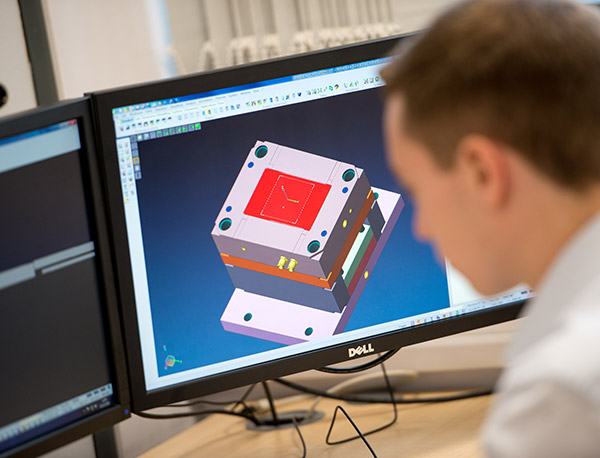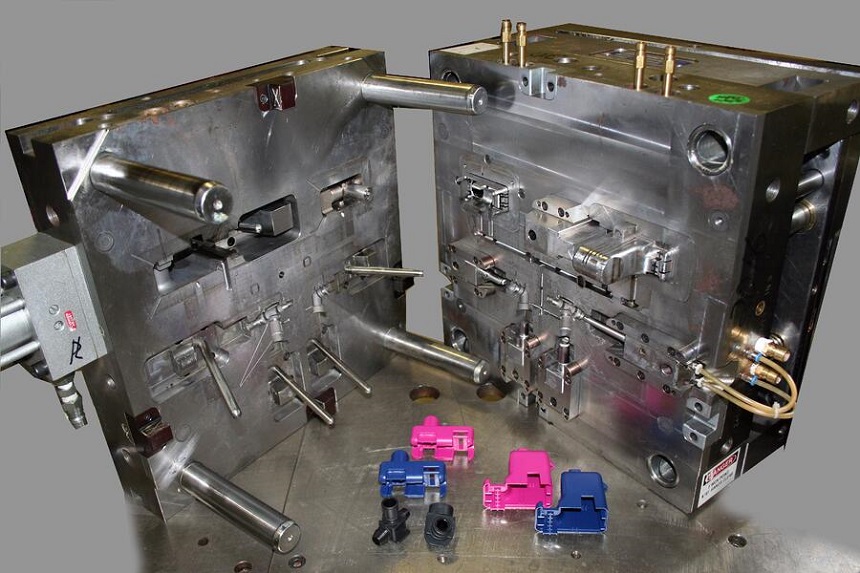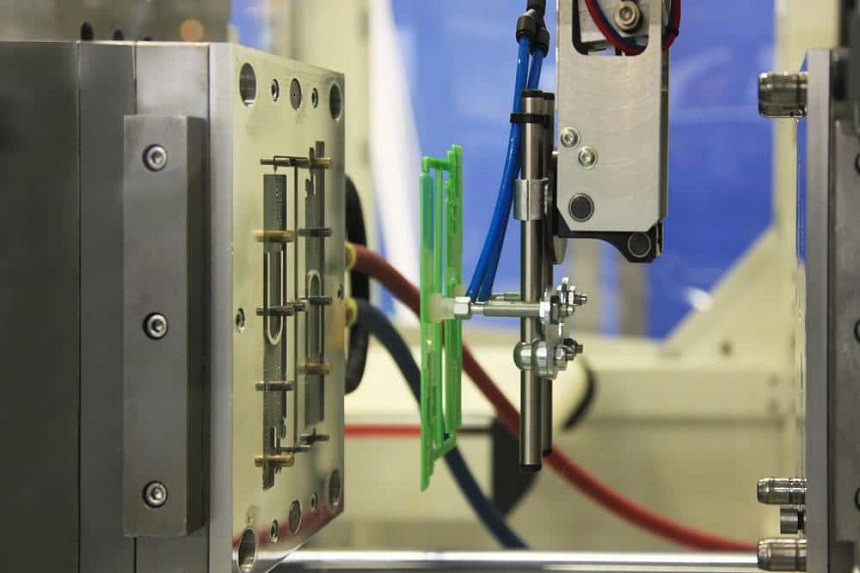Plastic Injection Mold Design Guide

Injection molding is a manufacturing process that uses a mold to rapidly manufacture plastic parts in bulk. The raw material for injection mold is plastic resin, so we are mainly focus on plastic injection molding.
When using injection molding to manufacture plastic parts, you first feed plastic pellets of your chosen material into the machine’s barrel through a hopper. Subsequently, the pellets are pushed toward the heated end of the barrel through a ram and screw mechanism. This is where they start melting.
Once they have fully melted, the liquid plastic is forced through the barrel’s nozzle and into the mold cavity. The plastic then uses the water-cooling channels around the mold to cool and solidify quickly while holding the mold’s shape. The mold is then opened, and ejector pins pop the product out of the mold cavity, after which it closes again and prepares for another injection.
This is just a single cycle. Depending on the part’s design, size, and the material used, a mold cycle can take around 2-5 seconds.
While the injection molding process is quite simple, it can only perform well if the part’s design is flawless. Careful design of your part and understanding of best practices for injection molding are critical when it comes to the level of quality you need. Poorly designed parts may lead to huge problems like voids, warps, or sinks.
In addition, if ejecting your part from the mold is difficult, you may end up damaging the mold or part. Unfortunately, if something like this happens, you’ll have to revisit the design and mill a new mold. This may consume hundreds of hours and thousands of dollars to rectify.
Read as our plastic injection molding company offers a brief design guide on plastic injection mold:
Crush ribs
When injection molding dictates that the majority of surfaces drafted, press-fit parts can be hard to manage. However, crush ribs are a viable solution. Crush ribs are used to secure press-fit parts. These features don’t need to be drafted and don’t have a big surface area. When a product is pushed onto the crush ribs, they create a firm hold by deforming just enough. This ensures that you get a secure fit for press-fit parts as well as a clean ejection from the mold.

Bosses
Bosses are hollow, cylindrical features that house fastening hardware like screws or thread inserts. While they can be placed anywhere, you should be aware of certain things. To prevent breakage, bosses always need some kind of support. However, they shouldn’t be attached to walls as they’ll make the walls too thick. A rib must be used to connect it to the closest wall — this wouldn’t just support the boss but will keep wall thickness uniform too.
Gussets must be used to support a boss if it’s isolated away from the walls. Making the connection of the base with the part is another practice that helps prevent breakage. Lastly, the boss’ core should extend all the way to the base. If the core is too short to too long, you’ll start witnessing problems related to wall thickness.
Draft angle
A draft angle is a slant that’s applied to the features and walls of your part so it can be easily ejected from the mold. By using a draft angle, pushing the ejector pins will extract the part out of the mold. If you don’t use a draft angle, your part will probably drag along the sides of the mold, damaging the mold and the part.
In addition, having a zero draft angle can lead to the formation of a vacuum when popping the part out, which needs more force to remove and can warp the part.
Rounded edges
Since sharp corners are prime areas for stress, you may witness some breakages. Usually, properly filling a sharp angle can be difficult for the molten plastic, which may create a void in the part. To avoid these issues, don’t design your part with sharp corners; replace them with radiused edges, bevels, or chamfers. Keeping your wall thickness all the way around the curve is important to avoid sink.
Gussets and ribs
Gussets and ribs add support and rigidity to most parts. By placing them strategically, you would improve the load-bearing stability of your part — this wouldn’t just make your part stronger but help you avoid thicker walls as well. To avoid a sink, the rib-to-wall ratio of thickness is paramount as the point where a wall and rib connect covers a substantial area where a sink may appear unintentionally.

Coring
You can choose to either core or hollow the section to accommodate for areas of a part that should be thicker. Scoop out the inside of the thick area and replace it with gussets or ribs. Gussets and ribs can provide support to the exterior walls to offer you the same sturdiness as a solid interior. This also offers the benefits of keeping wall thickness uniform, which decreases the weight of the part, and uses less material so you can keep the costs down.
Wall thickness
While designing walls may seem like a relatively simple task, there are certain precautions engineers should take into account when building their walls. Ideally, walls should either have a gradual transition from one thickness to another or uniform thickness to avoid voids, warp and sink. Since thicker walls take longer to cool, they make your mold costlier by increasing the overall mold cycle. In contrast, extremely thin walls may be broken or damaged during ejection from the mold. There’s no hard and fast rule regarding wall thickness because the minimum thickness heavily depends on the type of plastic you’ll be using.
Get top-quality custom plastic injection molding through PTMS — the finest plastic injection molding company in China
As one of the leading plastic injection molding companies, PTMS has been offering top-quality custom plastic injection molding mass production to its customers since 2002. With experienced employees and advanced injection machines, PTMS knows how to control costs in a reasonable range.
We have injection molders who provide one-stop service from plastic injection mold design, mold making, injection molding production, and product assembly for a holistic custom manufacturing experience.
Give us a call for more information on our plastic injection molding company!
